Top 10 effective methods of Teaching English in India includes The Direct Method, The Audio-Lingual Method, Suggestopedia, The Silent Way, Total Physical Response, Task-Based Learning, Lexical Approach, etc.
Table of Contents
The top 10 effective methods of teaching English includes The Silent Way, Total Physical Response, Grammar-cum-Translation Method, The Direct Method, and many more and are helpful for both teachers and students. It plays a vital role in promoting interaction cultivation chances along with specialist development among individuals.
English courses are available at colleges across India at many academic levels, such as undergraduate, postgraduate, diploma, and certificate programs. Students can earn a bachelor's degree by pursuing BA (Bachelor of Arts) in English Hons or BA (Bachelor of Arts) in English Literature.
Like any other topic, teaching language has undergone a lot of changes. It has shifted to role-plays, interactive games, short visuals, etc. from the traditional ways. Applicants must check out the popular methods of teaching English shared for reference.
Best Methods of Teaching English
In the history of teaching languages, there are many teaching approaches and techniques, with some being more well-known and successful than others. Language teaching methods are reliant on and affected by various hypotheses of language learning. The historical backdrop of language teaching advances in multiple ways.
There are a lot of methods of teaching English and we've listed a few that are very famous and active.
- Grammar-cum-Translation Method
- The Direct Method
- The Audio-Lingual Method
- Suggestopedia
- The Silent Way
- Total Physical Response
- Community Language Learning
- Communicative Language Teaching
- Task-Based Learning
- Lexical Approach
1. Grammar-cum-Translation Method
The name itself explains the functionality of the grammar-cum-translation method. This is one of the popular methods of teaching English in grammar orientation. However, it depends on a ton of interpretation. The technique is the conventional or 'old style' language learning method.
A few nations approach this teaching style. The fundamental thought behind this strategy is that the students become familiar with all grammar rules to translate various sentences easily.
Yet, many teachers recognise this technique as incapable since it does not include the spoken form of the language and communication skills are ignored. Furthermore, it does not allow the learners to think directly in the target language.
Thus, it hinders the creation of a direct link between thoughts and expression. Consequently, this technique doesn't improve the student's communicative ability in the language but builds strong language writing skills.
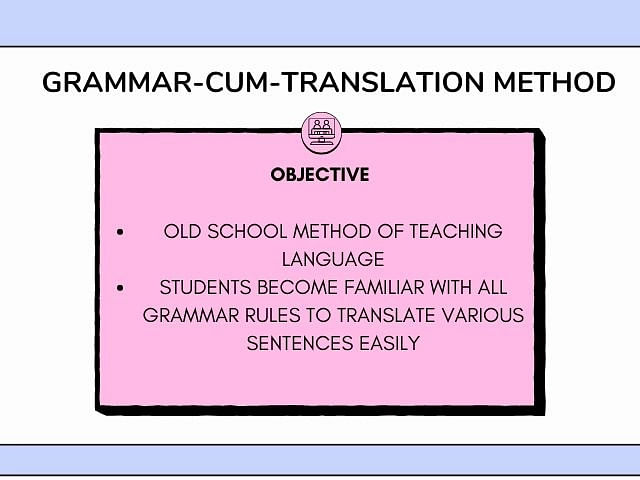
Also Check: Best English Grammar Books
2. The Direct Method
The audio method is also known as the direct method, which involves thinking and speaking in English. Here the communication between the teacher and the student is strictly in English, and the student is barred from using their native language.
This way, the student can get a stronghold on the accent and fluency, the frequency of grammatical errors in this would be less. This method is widely used as it helps the students learn the English language in a way a native English speaker would speak like and not the orthodox textbook way.
The following principles and procedures that guide the natural method are,
- Teachers and students both use the target language in the classroom.
- Students tend to have daily sessions on vocabulary and sentences.
- Grammar is instructed inductively.
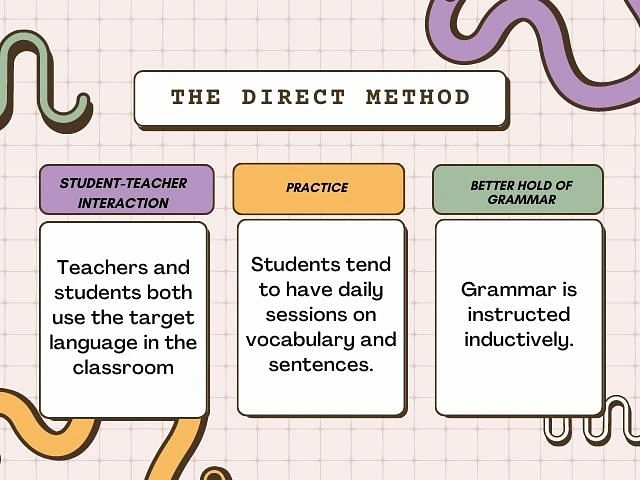
Also Check: Skill Development Courses List for Students
3. The Audio-Lingual Method
The audio-lingual method is also recognized as the Army Method. During the first world war, the American Armed forces started escalating oral courses known as the 'Military Particular Training Program'. Instructive organisations later received it as an audio-lingual method.
It is among the common methods of teaching English. The striking highlights of the audio-lingual method are,
- Language teaching starts with communication; the material is educated before it is offered in composed structure.
- The objective language is the study hall's main language; the student's primary language isn't utilised.
- The teacher is the role model for the student; student-to-student interaction happens in chain drills.
The army method is identified with the natural method. The most significant difference between the audio-lingual method and the natural method is its focal point of teaching. The natural method focuses on the learning of vocabulary, while the audio-lingual practice focuses on communication.
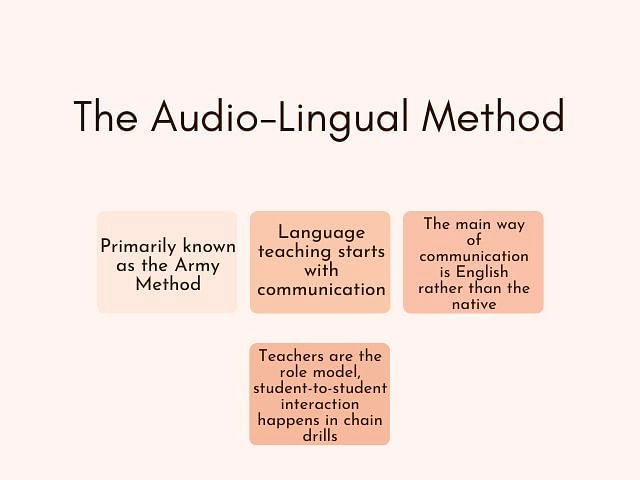
Also Read: 6 Coping Strategies For Student Mental Health
4. Suggestopedia
Suggestopedia is a behaviourist theory developed by Georgi Lozanov, the Bulgarian psychotherapist in the 1970s. It is listed in the methods of teaching English and uses the environment, music, decoratives, etc., for learning the language.
It depends a lot on the atmosphere and the physical environmental factors of the class. When teachers prepare to utilize the Suggestopedia method, there's a great deal of craftsmanship and music included. Each suggestopedia exercise is divided into three unique stages:
- Deciphering
- Concert Session
- Elaboration
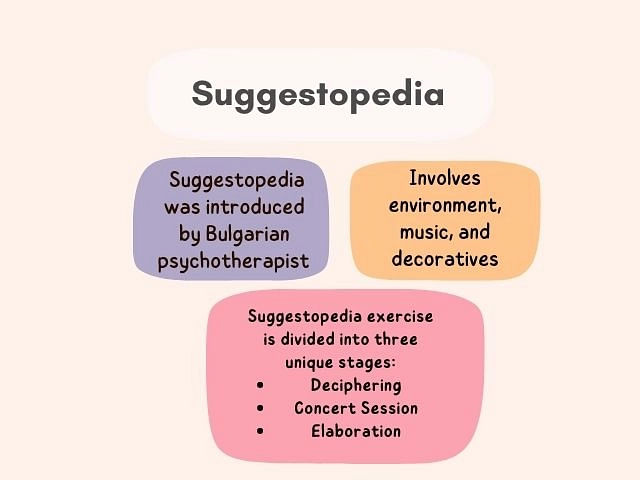
Also Check: Top 10 Most Effective Stress Management Techniques for Students
5. The Silent Way
The silent way leans mainly on the student's self-sufficiency. The teacher demonstrates only as a facilitator attempting to urge students to be more efficient in their learning. It is one of the popular ways of methods of teaching English.
The fundamental of these lines of teaching is for the teacher to state practically nothing so that students can assume responsibility for their education. This learning method follows a basic schedule, grammar, vocabulary, and pronunciation continually drilled and reused for support.
Further, the teacher assesses their students through their mistakes, and they may never set a conventional test as students are urged to address their language blunders.
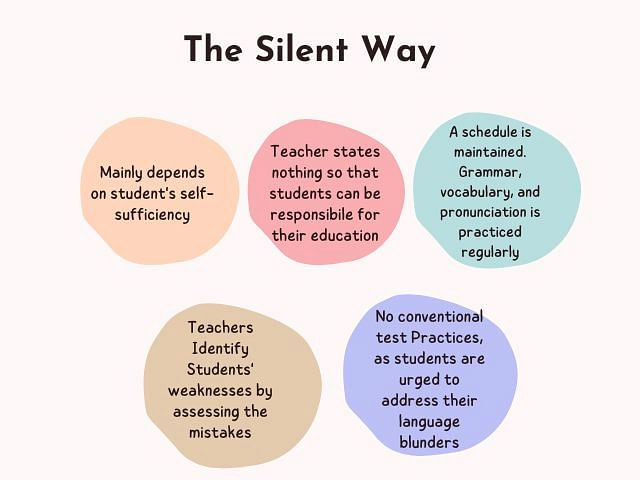
Also Check: 10 Tips for Staying Focused and Productive as A Student
6. Total Physical Response
Total Physical Response, also called TPR, is a methodology that follows 'learning by doing. For example, apprentices will learn English through a series of activities, "Close the door", "Stand up", "Open your book", and "Stroll to the window and open it." TPR is regarded as one of the best methods of teaching English.
Most of the class time in TPR lessons involves doing drills in which the teacher commands students using the imperative mood. In the beginning, students learn the meaning of the commands they listen to by direct observation.
With TPR, the most significant aptitude is aural perception, and everything else will be regular.
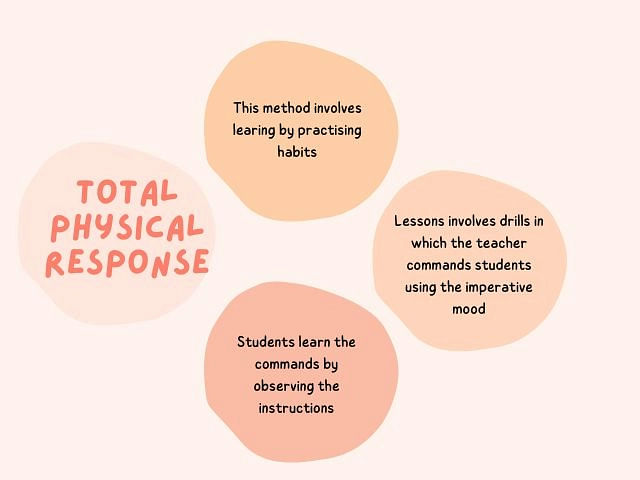
Also Check: List of 10 Novels for Students to Read
7. Community Language Learning
Community language learning is one of the innovative methods of teaching English. It is a language-teaching approach in which students cooperate to create what parts of a language they might want to learn. It depends on the counselling approach.
CLL is most likely one of the English teaching methods where the student feels the most secure. There's an extraordinary accentuation on the relationship and bond between the student and teacher.
In contrast to a ton of different methods and ways to deal with teaching English as a Second Language, a great deal of the native language is utilized for translation purposes.
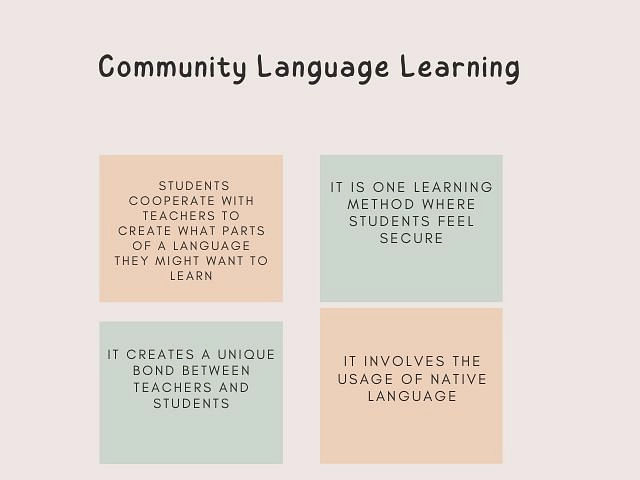
Also Check: 100+ English Literature Dissertation Topics in 2024
8. Communicative Language Teaching
The thought behind this methodology is to assist students with conveying all the more successfully and effectively in sensible circumstances that they may wind up. Therefore, this teaching includes concentrating on important capacities like thanking, complaining, suggesting, inviting, and requesting directions to give some examples.
Communicative Language Teaching which is the most famous methods of teaching English has the following qualities:
- The point is to make the student achieve communicative capability, for example, utilizing language precisely and appropriately.
- Communicative Language Teaching underscores the elements of a language rather than the principles.
- Utilize techniques to energize student cooperation in typical habitats- information gap exercises, role-play, group, and pair work.

Read More: 10 Ways to Balance Student Life And Academics
9. Task-Based Learning
Task-based language teaching is also called task-based instruction is one of the popular methods of teaching English. The principal point of this way to deal with learning is task finishing.
Typically, the teacher sets relevant and exciting tasks. Then, students are required to draw on their information in English to finish the job with as few mistakes as could be expected under the circumstances.
Such assignments can incorporate visiting a specialist, directing a meeting, or calling customer care for help.
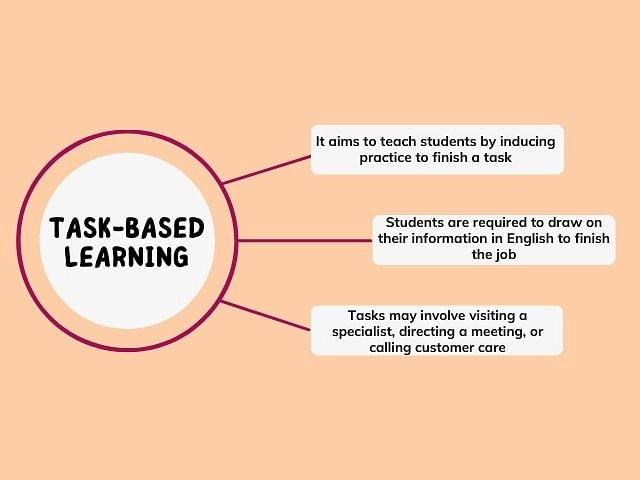
Also Check: 10 Prioritization Techniques for Student Productivity
10. Lexical Approach
Another significant methods of teaching English is the lexical approach. The lexical approach in language teaching looks to create a proposition for a schedule plan and language teaching established on a view of language in which lexis assumes a focal job.
The Lexical approach depends on computer studies that have recently distinguished the most customarily utilized words. This approach in teaching centres around vocabulary is securing and teaching lexical lumps arranged by their recurrence and use.
Teachers of the Lexical Approach place an extraordinary accentuation on bona fide materials and practical situations for increasingly important learning.
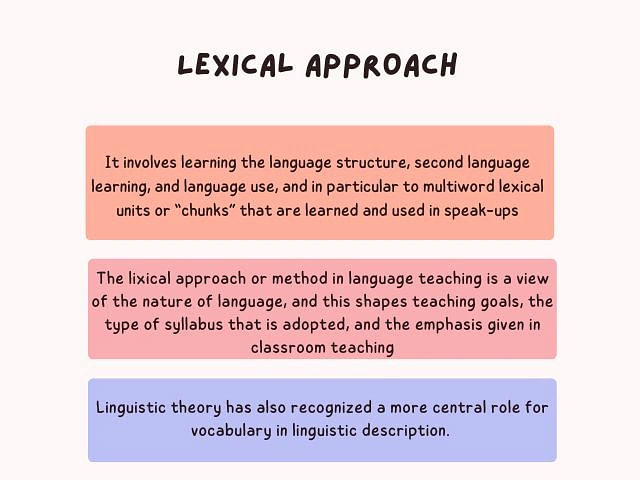
Key Points of English Teaching Methods
There are a few key pointers of the English teaching methods shared for students reference. Check out the key points related to teaching methods in English.
- Evaluating Student Requirements: Teachers must understand the children's backgrounds, interests, and learning styles. This allows them to effectively adjust their teaching approaches to the diverse needs of their students.
- Interactive Learning: Engaging students in active learning encourages greater comprehension of the themes. Group discussions, hands-on experiments, role-playing, and problem-solving assignments let students actively participate in various learning experiences.
- Responsive Teaching: Teachers should use unique teaching approaches to help students comprehend the material more quickly and thoroughly. This could include changing the pace of instruction, giving additional support or enrichment opportunities, and implementing different assessment methods.
- Technology Utilization: Integrating technology into the classroom can improve learning outcomes and engage students in various ways. Educational apps, multimedia resources, interactive whiteboards, and online collaborative tools can enhance traditional teaching techniques and have a good impact on Digital Education Methodology.
- Continuous Assessment: Regular assessments of student progress by quizzes, assignments, and classroom discussions provide useful feedback to both teachers and students. Formative assessment enables teachers to discover areas of improvement that students should focus on.
Relevant Link: Top 10 Essential Life Skills for Students in 2024
Benefits of Learning English
As of now, you are aware of English teaching methods, we will look at the benefits. English is a crucial language for good communication among people globally. As the universal language, you may effortlessly converse and express yourself to others.
At the graduate level, one can pursue a BA (Bachelor of Arts) in English and at the postgraduate level, MA (Master of Arts) in English is a good option to consider. Check out the benefits of learning English.
1. Multinational Communication
English is the modern world's common tongue, with millions of people speaking it as their primary or secondary language. Individuals with fluent English can effectively communicate with people from different languages and cultures.
English also makes it easier to converse with people from other countries, conduct business, and share cultures.
2. Academic Improvement and Learning
It counts for academic achievement because many educational institutions worldwide provide English-language courses, programs, and research possibilities. Students pursuing higher education, international study abroad programs, or academic research in various sectors benefit most from their proficiency in English.
3. Work Opportunities
In today's worldwide economy, English language skills are a crucial asset in the employment market. Many multinational corporations and organisations demand staff who can communicate effectively in English to interact with clients and customers and traverse foreign business environments. Proficiency in English opens the door to various job options in technology, finance, tourism, and international relations.
4. Availability of Information and Resources
English is the most common language used in many forms of media, such as books, journals, websites, social media, and other online platforms. Individuals with proficient English skills can access information, knowledge, and instructional materials written in English.
5. Cultural Interaction and Self-Development
The English language promotes cross-cultural communication and a greater knowledge and regard for various cultures, viewpoints, and ideas. Furthermore, learning English can increase confidence, self-esteem, and personal growth by allowing individuals to express themselves effectively and interact with others.
Also Check: Courses and Career Options After BA English





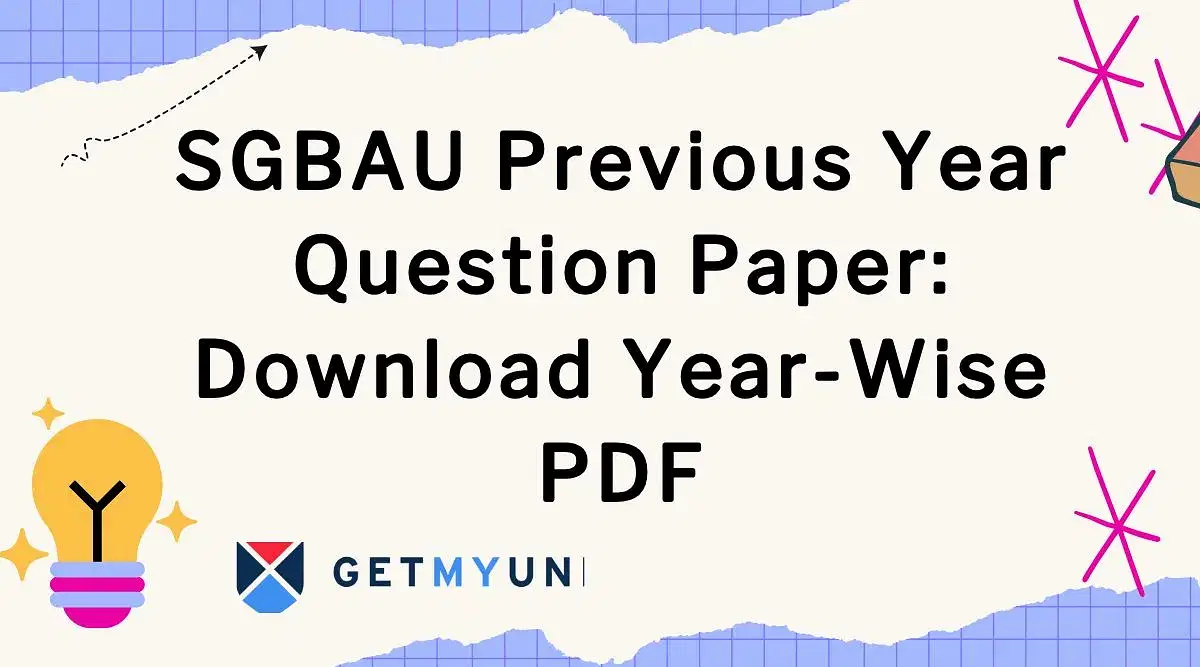
















POST YOUR COMMENT